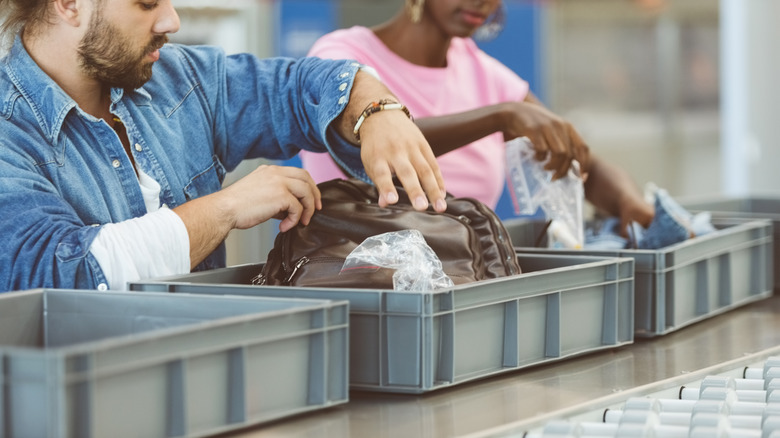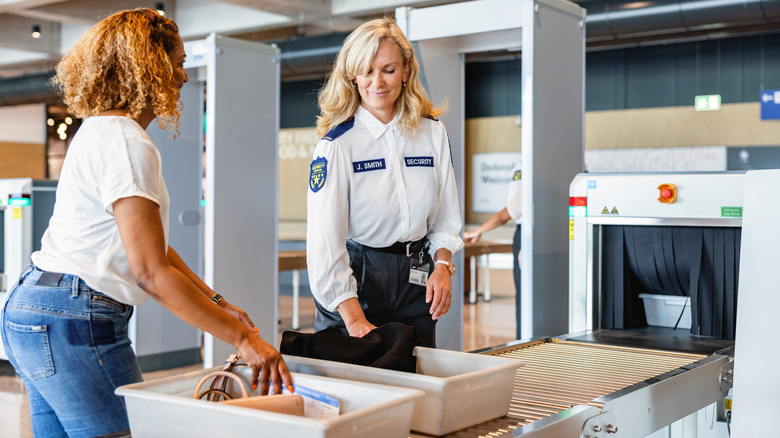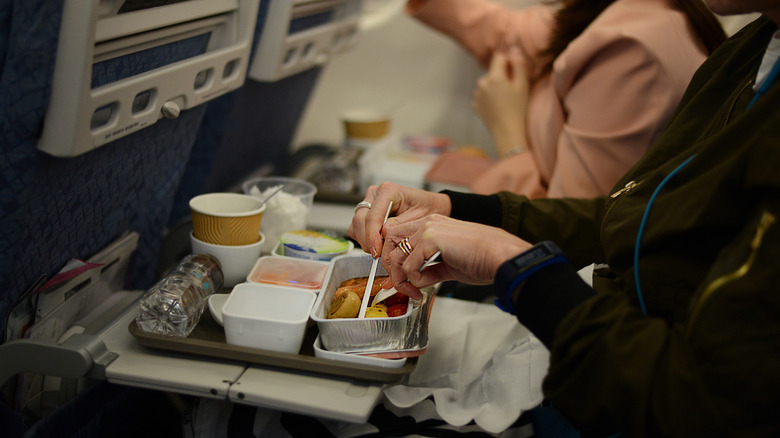Here's How Travelers With Celiac Disease May Be Able To Get Some Liquid Foods Through TSA
Traveling with celiac disease is far from impossible, though it isn't without some challenges. You may have to research gluten-free restaurants before your trip or learn a few phrases in the local language to explain your dietary restrictions to servers. On top of that, surviving a long-haul flight can require some extra planning to ensure you don't go hungry.
Thankfully, people with celiac disease have the right to bring their own food through TSA. In general, dry food items, such as gluten-free bread or cereal, are allowed through airport security, whether you have celiac disease or not. However, issues can arise when passengers attempt to bring liquid foods — including any ingredients that are spreadable or pourable — which are typically limited to 3.4-ounce containers.
When it comes to medically necessary liquids, such as special drinks or celiac-friendly soft foods, TSA will give the green light, even if quantities exceed the usual limits. Knowing this can help you get through the security checkpoint confidently with your gluten-free goodies. Travelers with celiac may also want to consider applying for TSA PreCheck, which makes it even easier to travel with carry-on liquids. If you don't have PreCheck, just be sure to keep your liquid foodstuff in a separate bag to speed up the screening process.
How to exercise your rights in the airport security line
When traveling with medically required liquids, it's always a good idea to declare the items to security officers before beginning the screening process. This can help you avoid getting flagged by TSA or having your food confiscated. Tell the officer that you're traveling with medically necessary foods that exceed the standard liquids rules. In many cases, TSA agents will respect your needs and let you through the security line. In other instances, they may require a closer inspection of your food, including conducting an explosives test on any liquids. This can take time, so it's best to arrive extra early to the airport.
To deal with any further questioning, it's wise to come prepared with a doctor's note. The note should confirm that you have celiac disease and require special foods. Keep a physical copy of the document safe in your bag, as well as in digital form on your phone in case you lose the original.
Don't forget to inform your airline
TSA isn't the only one who might need to know about your celiac disease. You should also give a heads-up to your airline, especially if you're planning to eat the plane food and snacks. First, make sure to request an in-flight meal for dietary restrictions, which is usually an option available when booking your trip. If you can't request a special meal during booking, use the airline's website or call its customer service line to reserve your gluten-free meal. Keep in mind that airlines aren't legally required to provide your meal choice, which is why it's always smart to pack your own snacks just in case.
If your packed foods exceed the airline's baggage policy, you'll also want to contact the carrier ahead of time to make arrangements. According to the Air Carrier Access Act (ACAA), airlines are expected to offer reasonable accommodations to travelers with disabilities or health conditions, including allowing extra food for travelers with celiac disease. If you need an extra carry-on bag stocked with gluten-free snacks and packed lunches, you shouldn't have to pay an additional fee to bring it on board, though this should be discussed with the airline before your departure day.


